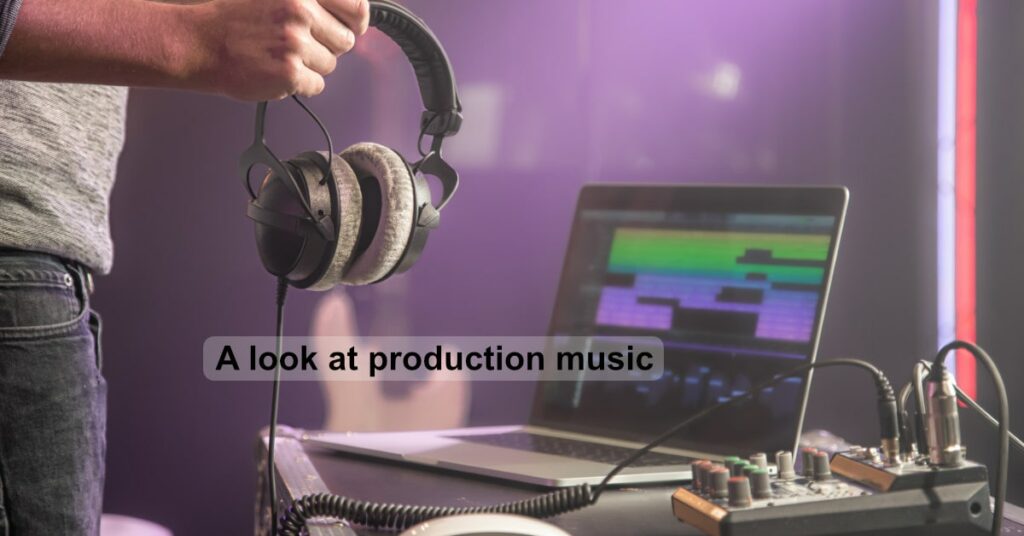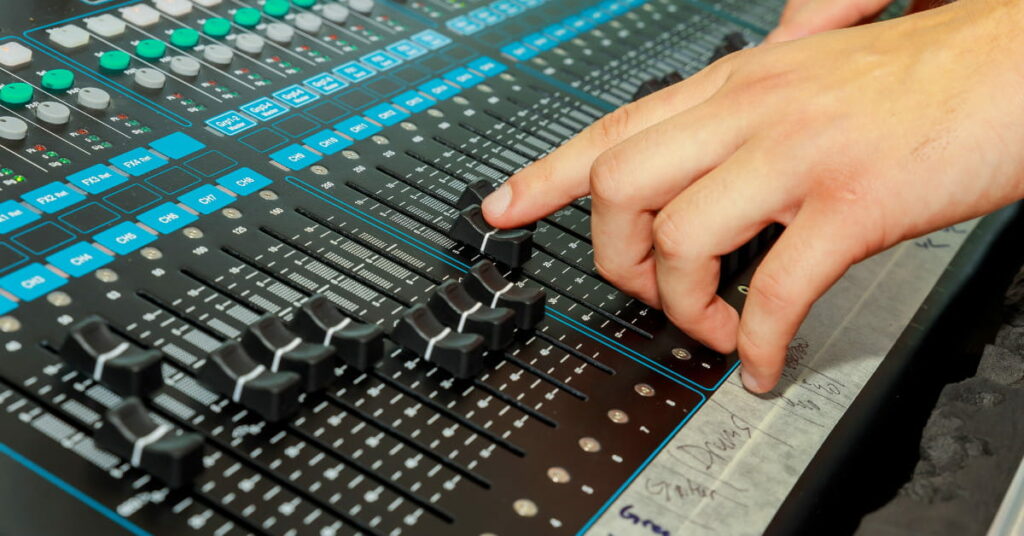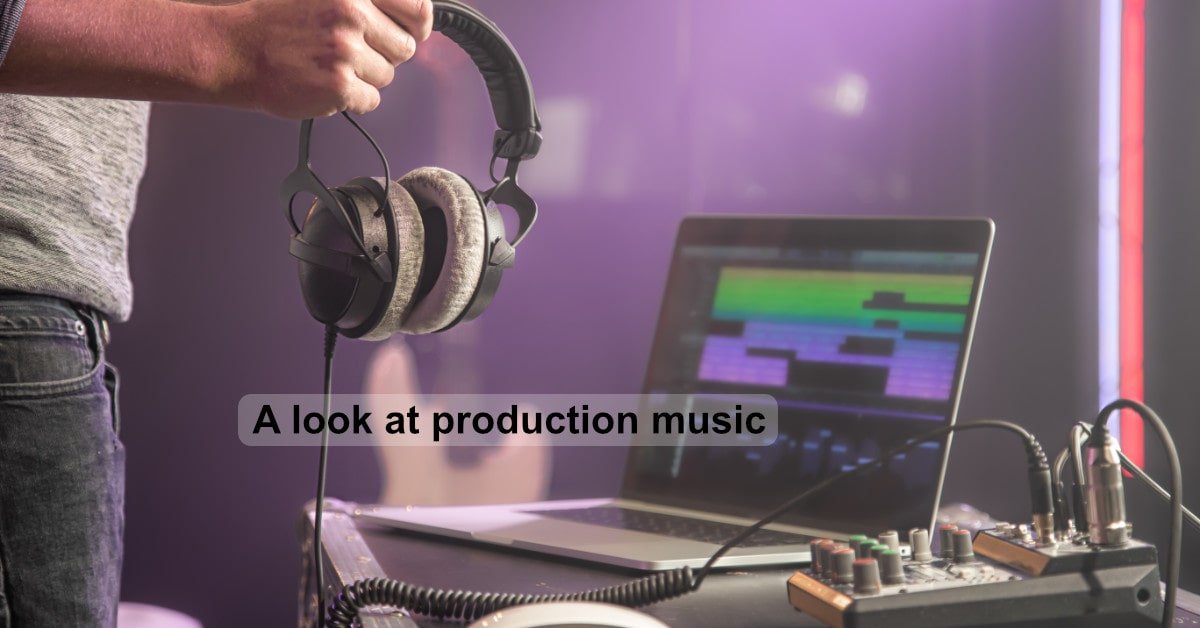A Look at The Application of Background Music in Video
Production music is a term used by recording industry professionals to describe the application of commercially recorded, non-popular music. This includes background or theme music for film, television, radio and other media.

Production Music Libraries (PML) is an online database containing information about audio tracks available for licensing on CD or download. A successful production music library provides film, television and media editors access to high-quality commercial musical recordings. These audio recordings then are evaluated for their use in various types of productions.
Music to Accompany Visual Content on Screen
Production music is composed specifically to support visual content on screen. Unlike popular music, library tracks are not released as singles or albums though some may appear on other compilations.
These compositions are used in a variety of media including film, television, radio and multimedia applications. These recordings are also frequently used in commercial items broadcast on TV or radio. For example, advertisements, corporate videos s and training films.
Most production music is written to evoke specific moods or emotions, which can be precisely matched to the visual content of a production. The music is also used to add interest and variety to visuals.
These may include:
- film trailers
- television ads
- radio jingles
- other audiovisual material for which no original dramatic score exists
Popular Music in Film and Television
Music made for visual production is increasingly being referred to as “popular music”. They are now an important part of the post-production process and can be heard in everything from film trailers to network branding.
Popular music libraries have started to attract attention from editors creating documentaries or news items for television. These vendors are beginning to produce edited-for-television compositions which are increasingly being included in soundtracks.
Production music can be used to help strengthen the existing musical identity of a television channel, giving it an individual voice that differentiates it from its rivals. It is also useful for underscoring interviews or connecting scenes in programmes such as reality TV shows or lifestyle programming.
Music made for vision is not new on the media market, but they are becoming more popular as a budget cuts into the budgets of television and radio producers.
Production music also has its use in advertisements, where it is used to create a specific mood for each commercial. In many cases, production tracks containing vocals are now being used in advertising spots.
The Market for Background Music
With recent developments in technology and the resultant effect on production costs, there has been a shift toward smaller budget productions. Not only are there fewer employees hired in major TV companies, but there is also increased outsourcing of library music used within these companies.
This leaves production companies with little time or money to source their own tracks for projects; consequently, many productions now rely heavily on commercially produced music.
Production music libraries are attracting attention from editors creating documentaries or news items for television. These vendors are beginning to produce edited-for-television compositions which are increasingly being included in soundtracks.
Other uses for this type of music include underscoring interviews or connecting scenes in television programmes, such as reality TV shows or lifestyle programming.
Production Music Libraries
Production music is now available from various vendors offering a variety of tracks and genres. As well as licensing individual tracks, production music libraries also provide access to collections of thousands of pieces via download or CD.

As the internet has become an important resource for media professionals, many production companies have turned to online production music libraries for their search for music. Some websites allow users to search their library by genre, mood, instrumentation or style.
Others provide a few more options in terms of how tracks are categorized for ease of access through this means. Many libraries also sell pre-edited music which is made specifically for television advertising.
The Variety of Music Available to Video Producers
Production music library brands offer most genres of music including ambient, alternative, blues, comedy, electronic, folk, jazz, orchestral, rock, sound fx and world.
This audio library has become an important resource for media professionals with their search for music. Libraries offer a wide range of tracks via download or CD. There are thousands of pieces available with online access through websites that provide options in how the tracks are categorized for ease of search.
Some websites allow users to search their library by genre, mood, instrumentation or style, while others provide a few more options in terms of how tracks are categorized. Libraries also sell pre-edited music which is made specifically for television advertising. You can find production tracks containing vocals being used in advertisements with the rise in the popularity of production tracks
The Business Model Within the Music Industry
The business model of Production music is similar to the structure and the foundation of its administrative division. For example, if you are working for a “small” production music library it will most likely be distributed through the Creative department, with no separate division for licensing. But if you are working in a major library with multiple sub-divisions and specialized departments (such as production music, synchronization and mechanical licensing) then you will most likely handle both divisions simultaneously.
This is why it’s very important to understand the main principles of each division even before we can think about our future career in production music. We need to learn how licensing works and what kinds of services we will be providing.
Music Publishing and Licensing Considerations
The licensing department is responsible for publishing music, while the Creative department manages different artists, composers and tracks. The Creative department consists of 3 main divisions: A&R (Artist & Repertoire), Music supervision and music production. All three divisions are dealing directly with clients (advertising agencies, film producers etc). Each division has its own role in the business model.
A&R is responsible for signing artists, composers and tracks. They are also scouting new talent and recording demos of signed artists. The A&R manager should be able to predict trends and develop strategies that will help the library stay relevant to current industry standards. Supervision deals with the supervision of artistic direction, audio post-production and music clearance. Music supervision is exposed to interference from clients (advertising agencies) and has tough tasks such as pre-recording meetings with directors/producers which might affect the final sound of the track.
Getting the Music Produced and Ready for Market
Last but not least is the Music Production division. They are finalizing all tracks before they are sent to A&R. Usually, this involves producing demos of signed artists and composers. The role of a music producer varies from project to project.
He (or she) could be working with one artist at a time or multiple artists depending on the project and deadlines. The producer finalizes tracks by adding additional instruments and effects, depending on the needs of each client and their creative vision.

